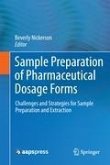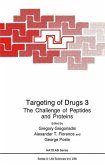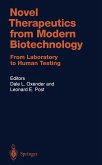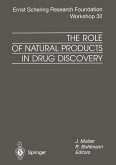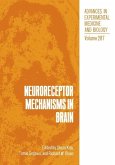Rational Design of Stable Protein Formulations (eBook, PDF)
Theory and Practice
Redaktion: Carpenter, John F.; Manning, Mark C.
113,95 €
113,95 €
inkl. MwSt.
Sofort per Download lieferbar

57 °P sammeln
113,95 €
Als Download kaufen

113,95 €
inkl. MwSt.
Sofort per Download lieferbar

57 °P sammeln
Jetzt verschenken
Alle Infos zum eBook verschenken
113,95 €
inkl. MwSt.
Sofort per Download lieferbar
Alle Infos zum eBook verschenken

57 °P sammeln
Rational Design of Stable Protein Formulations (eBook, PDF)
Theory and Practice
Redaktion: Carpenter, John F.; Manning, Mark C.
- Format: PDF
- Merkliste
- Auf die Merkliste
- Bewerten Bewerten
- Teilen
- Produkt teilen
- Produkterinnerung
- Produkterinnerung

Bitte loggen Sie sich zunächst in Ihr Kundenkonto ein oder registrieren Sie sich bei
bücher.de, um das eBook-Abo tolino select nutzen zu können.
Hier können Sie sich einloggen
Hier können Sie sich einloggen
Sie sind bereits eingeloggt. Klicken Sie auf 2. tolino select Abo, um fortzufahren.

Bitte loggen Sie sich zunächst in Ihr Kundenkonto ein oder registrieren Sie sich bei bücher.de, um das eBook-Abo tolino select nutzen zu können.
Recombinant proteins and polypeptides continue to be the most important class of biotechnology-derived agents in today's pharmaceutical industry. Over the past few years, our fundamental understanding of how proteins degrade and how stabilizing agents work has made it possible to approach formulation of protein pharmaceuticals from a much more rational point of view.
This book describes the current level of understanding of protein instability and the strategies for stabilizing proteins under a variety of stressful conditions.
- Geräte: PC
- ohne Kopierschutz
- eBook Hilfe
- Größe: 22.32MB
Andere Kunden interessierten sich auch für
![Protein Design and the Development of New Therapeutics and Vaccines (eBook, PDF) Protein Design and the Development of New Therapeutics and Vaccines (eBook, PDF)]() Protein Design and the Development of New Therapeutics and Vaccines (eBook, PDF)40,95 €
Protein Design and the Development of New Therapeutics and Vaccines (eBook, PDF)40,95 €![Sample Preparation of Pharmaceutical Dosage Forms (eBook, PDF) Sample Preparation of Pharmaceutical Dosage Forms (eBook, PDF)]() Sample Preparation of Pharmaceutical Dosage Forms (eBook, PDF)161,95 €
Sample Preparation of Pharmaceutical Dosage Forms (eBook, PDF)161,95 €![Targeting of Drugs 3 (eBook, PDF) Targeting of Drugs 3 (eBook, PDF)]() Targeting of Drugs 3 (eBook, PDF)40,95 €
Targeting of Drugs 3 (eBook, PDF)40,95 €![Free Radicals in Diagnostic Medicine (eBook, PDF) Free Radicals in Diagnostic Medicine (eBook, PDF)]() Free Radicals in Diagnostic Medicine (eBook, PDF)40,95 €
Free Radicals in Diagnostic Medicine (eBook, PDF)40,95 €![Novel Therapeutics from Modern Biotechnology (eBook, PDF) Novel Therapeutics from Modern Biotechnology (eBook, PDF)]() Novel Therapeutics from Modern Biotechnology (eBook, PDF)233,95 €
Novel Therapeutics from Modern Biotechnology (eBook, PDF)233,95 €![The Role of Natural Products in Drug Discovery (eBook, PDF) The Role of Natural Products in Drug Discovery (eBook, PDF)]() The Role of Natural Products in Drug Discovery (eBook, PDF)40,95 €
The Role of Natural Products in Drug Discovery (eBook, PDF)40,95 €![Neuroreceptor Mechanisms in Brain (eBook, PDF) Neuroreceptor Mechanisms in Brain (eBook, PDF)]() Neuroreceptor Mechanisms in Brain (eBook, PDF)40,95 €
Neuroreceptor Mechanisms in Brain (eBook, PDF)40,95 €-
-
-
Recombinant proteins and polypeptides continue to be the most important class of biotechnology-derived agents in today's pharmaceutical industry. Over the past few years, our fundamental understanding of how proteins degrade and how stabilizing agents work has made it possible to approach formulation of protein pharmaceuticals from a much more rational point of view.
This book describes the current level of understanding of protein instability and the strategies for stabilizing proteins under a variety of stressful conditions.
This book describes the current level of understanding of protein instability and the strategies for stabilizing proteins under a variety of stressful conditions.
Dieser Download kann aus rechtlichen Gründen nur mit Rechnungsadresse in A, B, BG, CY, CZ, D, DK, EW, E, FIN, F, GR, HR, H, IRL, I, LT, L, LR, M, NL, PL, P, R, S, SLO, SK ausgeliefert werden.
Produktdetails
- Produktdetails
- Verlag: Springer New York
- Seitenzahl: 206
- Erscheinungstermin: 6. Dezember 2012
- Englisch
- ISBN-13: 9781461505570
- Artikelnr.: 44053039
- Verlag: Springer New York
- Seitenzahl: 206
- Erscheinungstermin: 6. Dezember 2012
- Englisch
- ISBN-13: 9781461505570
- Artikelnr.: 44053039
- Herstellerkennzeichnung Die Herstellerinformationen sind derzeit nicht verfügbar.
1 Practical Approaches to Protein Formulation Development.- Preparation for Formulation Development.- Preformulation Development.- Formulation Development.- Formulation in Commercial Product Development.- Appendix: List of Regulatory Documents.- References.- 2 Recombinant Production of Native Proteins fromEscherichia coli.- Distribution of Expressed Proteins.- Cell Washing and Lysis.- Purification of Soluble, Folded Proteins.- Purification and Refolding of Soluble, Misfolded Proteins.- Purification and Refolding of Proteins from Inclusion Bodies.- Refolding Mechanism.- Methods to Analyze Folded Structures.- References.- 3 Physical Stabilization of Proteins in Aqueous Solution.- Overview of Physical Stability.- Interactions of Excipients with Proteins.- Physical Factors Affecting Protein Stability.- Conclusions.- Appendix: Derivation of the Wyman Linkage Function and Application to the Timasheff Preferential Exclusion Mechanism.- References.- 4 Effects of Conformation on the Chemical Stability of Pharmaceutically Relevant Polypeptides.- Relationship Between Structure and Deamidation Rates.- Role of Structure in Protein Oxidation.- Summary.- References.- 5 Rational Design of Stable Lyophilized Protein Formulations: Theory and Practice.- Minimal Criteria for a Successful Lyophilized Formulation.- Rational Design of Stable Lyophiilized Formulations.- Acknowledgments.- References.- 6 Spray-Drying of Proteins.- Introduction: Why Spray-Dry a Protein?.- Developments in the Last 10 Years.- The Practice of Spray-Drying Proteins.- Concluding Remarks.- References.- Chapter7 Surfactant-Protein Interactions.- Proteins and Surfactants at Surfaces.- Protein-Surfactant Interactions in Solution.- Surfactant Effects on Protein Assembly State.- Surfactant Effects on Proteins During Freezing, Freeze-Drying and Reconstitution.- Enzymatic Degradation of Non-Ionic Surfactants.- Recommendations for Protein Formulation.- References.- 8 High Throughput Formulation: Strategies for Rapid Development of Stahle Protein Products.- Overall Structure of the HTF Approach.- Role of an Established Decision Tree for Formulation Design.- Use of Software and Databases to Assist in the HTF Process.- Essential Analytical Methods.- Stability Protocols.- Unified Strategy for HTF.- References.
1 Practical Approaches to Protein Formulation Development.- Preparation for Formulation Development.- Preformulation Development.- Formulation Development.- Formulation in Commercial Product Development.- Appendix: List of Regulatory Documents.- References.- 2 Recombinant Production of Native Proteins fromEscherichia coli.- Distribution of Expressed Proteins.- Cell Washing and Lysis.- Purification of Soluble, Folded Proteins.- Purification and Refolding of Soluble, Misfolded Proteins.- Purification and Refolding of Proteins from Inclusion Bodies.- Refolding Mechanism.- Methods to Analyze Folded Structures.- References.- 3 Physical Stabilization of Proteins in Aqueous Solution.- Overview of Physical Stability.- Interactions of Excipients with Proteins.- Physical Factors Affecting Protein Stability.- Conclusions.- Appendix: Derivation of the Wyman Linkage Function and Application to the Timasheff Preferential Exclusion Mechanism.- References.- 4 Effects of Conformation on the Chemical Stability of Pharmaceutically Relevant Polypeptides.- Relationship Between Structure and Deamidation Rates.- Role of Structure in Protein Oxidation.- Summary.- References.- 5 Rational Design of Stable Lyophilized Protein Formulations: Theory and Practice.- Minimal Criteria for a Successful Lyophilized Formulation.- Rational Design of Stable Lyophiilized Formulations.- Acknowledgments.- References.- 6 Spray-Drying of Proteins.- Introduction: Why Spray-Dry a Protein?.- Developments in the Last 10 Years.- The Practice of Spray-Drying Proteins.- Concluding Remarks.- References.- Chapter7 Surfactant-Protein Interactions.- Proteins and Surfactants at Surfaces.- Protein-Surfactant Interactions in Solution.- Surfactant Effects on Protein Assembly State.- Surfactant Effects on Proteins During Freezing, Freeze-Drying and Reconstitution.- Enzymatic Degradation of Non-Ionic Surfactants.- Recommendations for Protein Formulation.- References.- 8 High Throughput Formulation: Strategies for Rapid Development of Stahle Protein Products.- Overall Structure of the HTF Approach.- Role of an Established Decision Tree for Formulation Design.- Use of Software and Databases to Assist in the HTF Process.- Essential Analytical Methods.- Stability Protocols.- Unified Strategy for HTF.- References.


